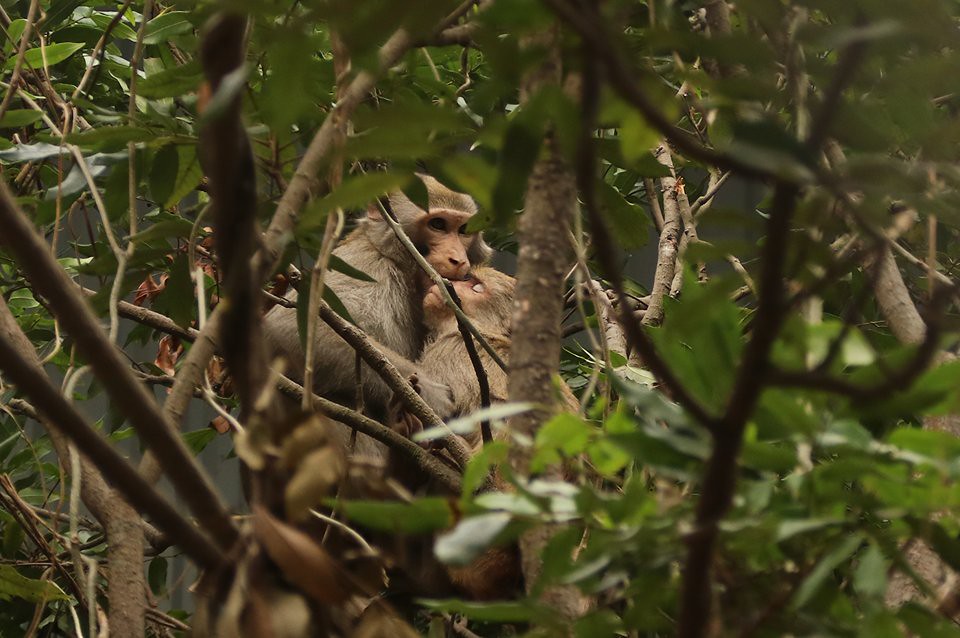#MacaqueWeek: Tool use and cultural learning goes way beyond what we previously knew
01 May 2018
Macaques are the most widely distributed primates on earth other than humans, ranging from Japan to the Indian subcontinent, north Africa and southern Europe.
All 23 known species have intricate social structures and hierarchies, with social groups arranged around dominant, matriarchal females.
And while humans commonly perceive themselves to the master tool users among primates, macaques have an impressive track record too.
Populations of macaques have been observed crafting and using tools in ways which had only previously documented in chimpanzees.
Tool using skills have been developed to access foods and a variety of different techniques have been observed being passed on to members of their troops through a process of social learning.

Burmese long-tailed macaques on the Islands of Piak Nam Yai and Thao in Laem Son National Park, Thailand, use stone and shell tools to crack open seafood, and in doing so they use 17 different action patterns.
Most commonly, the macaques use one-handed hammering with the points of smaller tools to crack open rock oysters that require precision striking, and one-or two-handed hammering with the faces and edges of larger tools to crack unattached shellfish that had to first be placed on anvils, reflecting different techniques for different foods.
While the tide is out, the macaques break open oysters attached to large boulders. They dislodge the top half of the shell using their crushing tool and then scoop out the meat with their fingers from the remaining part still attached to the rock.
%20[CC%20BY%202.5%20(https-::creativecommons.org:licenses:by:2.5)],%20via%20Wikimedia%20Commons.png)
While general tool use appears to be universal among macaques, individual communities have come up with hugely original and specialised tools and techniques of their own.
Long-tailed macaques in Lopburi, Thailand for example, use human hair as if it were dental floss.
This eccentric behaviour is seen in a large group of macaques that live at the old Buddhist shrine of Prang Sam Yot. Many monkeys of this group take hair and sort a few pieces to make a string and then brush their teeth by pulling it tightly from right to left.
The use of human hair in this way appears to be a highly localised example of creativity and cultural learning and gives a tantalising glimpse into the extraordinary mental faculties of the world’s second most populous primate.
BACK





